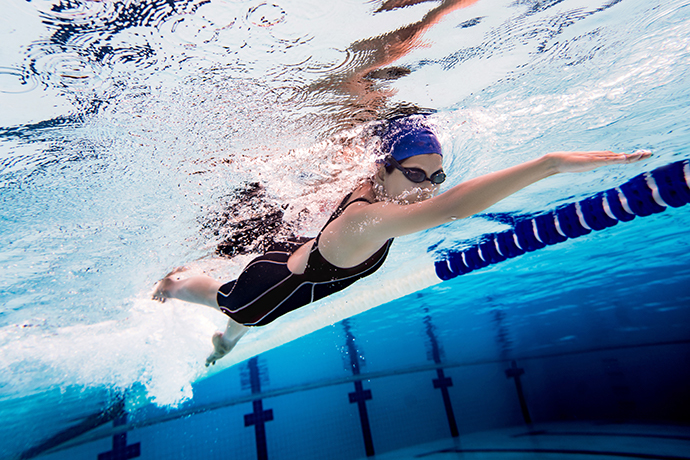
Sometimes there’s nothing better than ditching the treadmill and running outside.
But, with an outdoor run comes the elements. You know the ones: sun, wind, rain, cold. These change how you run, where you run, what you wear and the checklist grows. But what if it’s absolutely perfect outside? Does that mean you can toss out your running gear checklist? Nope.
Before heading out the door for your run, here are two things you’ll always need — no matter what.
Make sure you have a hydration plan
Your body needs more water than usual while you’re exercising — even if it’s cold, windy or raining. This is because you lose fluid when you sweat, and fluid helps supply your muscles with oxygen-rich blood as well as helps regulate your body temperature. You also lose electrolytes when you sweat, which are important for muscle contractions.
Everyone sweats a different amount, but a general rule of thumb while you run is to drink a few long sips of fluid every 20 minutes. Sometimes, you may need even more water and electrolytes than you think, especially when you’re running:
- In high heat or humidity — since you’ll likely sweat even more than usual
- A half marathon or full marathon — when it’s easier to fall into the trap of making hydration mistakes
And your hydration plan shouldn’t just start on you run — it should start before you run. If you start a run even slightly dehydrated, your physical performance may be reduced, making those last few miles feel much longer than they actually are.
Tips for staying hydrated while running outdoors:
- Don’t start a run dehydrated. Before a run, check your hydration status by taking a look at the color of your pee (anything darker than pale yellow means you’re dehydrated), and try to drink about two cups of water about two hours before you head out.
- Know your water source. Whether you use a handheld water bottle or plan to set up your own water stations on a familiar route, you need to have a water source planned.
- Don’t be fooled by the weather. Just because it’s cold or rainy doesn’t mean you don’t have to worry about staying hydrated. You’re going to sweat, so you’re going to need water.
- Rehydration is important, too. So you started your run hydrated and sipped water while you ran, now what? Rehydrate! Especially if it was a long or sweaty run.
Slather on plenty of sweat-resistant sunscreen
Otherwise known as water-resistant sunscreen, sweat-resistant sunscreen is a must for almost any outdoor run (okay, you caught us — if you’re running at night, you can probably skip the sunscreen).
Skin cancer is one the most common types of cancer diagnosed every year, and most cases are actually preventable. The best ways to reduce your risk of developing skin cancer is to protect your skin from the sun by using sunscreen or wearing protective clothing.
During an outdoor run, relying on protective clothing probably isn’t the best idea (after all, you don’t want to overheat). Sunscreen is your next best option — but not just any sunscreen.
For an outdoor run, make sure you’re wearing water-resistant sunscreen. It’s often the bottles labeled “Sport” in the sunscreen aisle. Water-resistant sunscreen will ensure that you’re not losing protection as you sweat.
Even if it’s overcast or cold outside, make sure you head out for your run wearing plenty of sweat-resistant sunscreen. And make sure you’ve slathered it anywhere that’s not protected by clothing.
Tips for choosing a sweat-proof sunscreen:
- Fact-check the label’s claims. Just because the front label says “Sport” doesn’t mean it’s actually water-resistant. Make sure you find “water-resistant” somewhere on the label.
- Know how long your sunscreen is water-resistant for. There’s no such thing as waterproof or sweat-proof. Every sunscreen will state how often it needs to be reapplied, so make sure you’re adhering to the bottle’s guidelines. And, keep in mind, most water-resistant sunscreens need to be reapplied more often than regular sunscreen.
- Should you choose a lotion, gel, cream or spray? Sunscreens come in a lot of forms. Creams work really well for your face, while lotions are good for covering large areas. Gels work best in areas with a lot of hair and sticks are great for applying sunscreen around your eyes. Just know that sprays are the easiest to apply incorrectly.
- Don’t skimp on the SPF, but you don’t have to overdo it either. Make sure the sunscreen you choose is broad spectrum and has an SPF between 30 and 50. And don’t fall into the trap of assuming that you don’t have to reapply SPF 100 as much since it offers twice as much protection as SPF 50. It doesn’t.
- Don’t skip your ears. They’re easy to forget!


